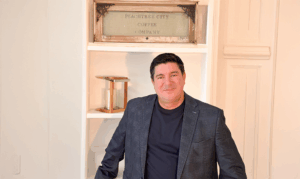While reading the story of the triathlete, Ms. Hill, who crashed with a young golf cart driver in PTC, a few thoughts come to mind.
First off, I agree with Ms. Hill that anyone allowed to drive a golf cart on city paths without direct supervision should at least have a driving learner’s permit which would require passing a basic rules of the road test.
But more to the point is an old term, defensive driving.
I do not know if this is what is taught in Driver’s Ed these days, but it was a primary phrase when I was receiving instruction way back in the ‘70s.
Quite simply, this term means that when driving (or riding), one must assume that anything can happen and to be prepared for that anything.
As one who often rides my bike on the paths and roads of PTC for almost a decade, I like most have experienced the poor skills of many drivers, mostly though by no means exclusively teen drivers.
Thankfully, I have not crashed, but there have been close calls. I often have to “slow my roll” which is a pain when you are dealing with inertia, but one of the first things that I learned as a young biker is that regardless of fault, the biker always loses.
But back to defensive driving. What follows are a few tips that I hope that least some young (and not so young) drivers will internalize.
If you cannot see over a hilltop or around a curve, assume that over the rise or right around the bend there is a vehicle turning out in front of you, or an animal in the road, or a vehicle coming from the other direction at least partially in your lane.
This latter threat applies to the cart paths even more so where there are no lanes and where the most frequent hazard is someone coming the other way, cutting the corner.
At a 4-way stop, assume that someone is going to ignore the rules and take off before their turn. This happens frequently.
When you are the first in line at a red light, assume that when your light turns green, someone in the cross traffic is going to blow through their red light. Pause and look before proceeding; it happens more than you might think and cost the life of a friend of mine many years ago.
If you see kids playing, either near the road or even in their yard, assume that one will run out into the road. Slow down.
Finally, and this is a big one especially for our new drivers, remember that you are not the only one on the path or the road.
What I have witnessed over the years as the most prevalent cause of hazards by young drivers can only be explained by a driver having no thought or concern that they are sharing the path.
This is why corners are cut, why they fly over the top of a hill, why they change directions without looking. Our paths are barely wide enough for two oncoming carts to pass. If you cut the corner, you are setting up for a collision.
To me, defensive driving has always meant assuming that someone along your travels will do something stupid, and as often as not someone does.
But to be honest, there have been more than a few times in my driving career when I was the stupid one. We are all humans with our own schedules, pressures, preoccupations, and distractions and eventually we all make mistakes.
Here’s hoping that when you are the “stupid” one, those around you are expecting it.
Alan Felts
Peachtree City, Ga.











Leave a Comment
You must be logged in to post a comment.